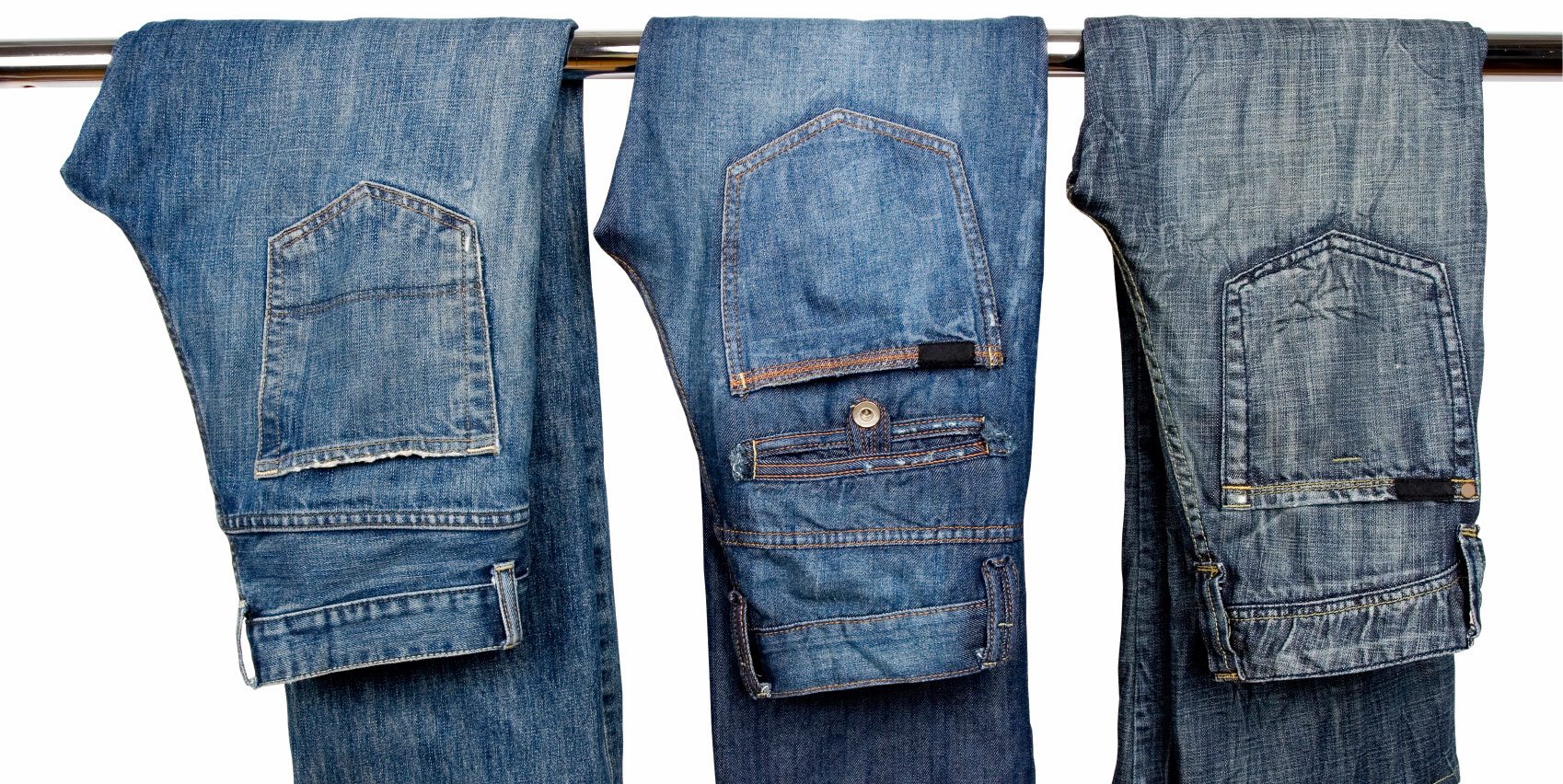Wednesday marked the birthday of a true American icon: the blue jean. It’s been 142 years since Levi’s received the patent for its riveted-for-strength denim jean. And for generations, the bottom has served as workwear, schoolwear, casual weekend wear, and been dressed up for date nights. But in its latest evolution, the very definition of denim is perhaps being compromised as makers are adding more and more stretch to jeans. And that’s being met with customer dismay, as they prefer the authentic durability of jeans like those Levi’s just added to its historical archives.[quote]
The athleisure trend has been blamed for a downturn in the denim business. But it’s only been in recent years that so many denim makers have begun substituting cotton for manmade materials — to the point where even premium brands have marketed bottoms as denim when they’re just 45 percent cotton.
“Unfortunately, this is a trend that is not going to go anywhere soon,” says Lisette Geller, managing editor of Denimology.com. “On the contrary, brands are developing more and more different kinds of 2-, 3- and 4-way stretch materials. There is no more feel of ‘denim,’ but rather of stretchy pants. And yes, there will always be the denim lovers that resort to just a tiny bit of stretch for comfort. But the real denim head will never ever buy any denim that has stretch.”
Almost all consumers (96%) prefer their jeans to be made of cotton and cotton blends, according to Cotton Incorporated’s Lifestyle Monitor™ Survey. The majority (56%) of consumers say they are bothered brands and retailers would substitute synthetic fibers for cotton in their jeans.
Geller says it should be noted that last year’s sweat-jeans and jog jeans didn’t catch on with consumers. So those looking to capitalize on the athleisure trend should take a different approach.
“I absolutely insist that the way to go is pairing a pair of super soft and comfortable jeans with any kind of athletic top,” Geller says. “There will always be brands out there to try to change denim into something it is not, and is not supposed to be, unfortunately.”
The Euromonitor reports global women’s denim sales increased by 4% in 2014, a slight decrease from 6% growth in 2013. It states the total global denim market increased 5% in 2014. Total U.S. jean sales declined 8% in 2014, to $15.4 billion, according to The NPD Group/Consumer Tracking Service. Meanwhile, the Euromonitor says sports-inspired apparel rose 6% in 2014.
Some denim-focused brands have seen a downturn in business in the last quarter, with Levi Strauss reporting a 7% decrease and Gap Inc. down 3%. However, Gap’s Old Navy business increased 3%.
Wrangler also thwarted the slow sales trend by posting a 9% increase. The brand has experienced four quarters of growth. And Madewell, which is popular for its women’s denim, saw sales jump 35% for fiscal 2014.
Levi’s, meanwhile, is launching a new women’s collection this fall called Lot 700, which evokes the company’s signature three-digit labeling style. The brand says it is looking to marry its authenticity with modernity. The denim maker used the anniversary of the blue jean to announce its acquisition of one of the two oldest pairs of jeans in existence — bottoms that date back to the 1880s. They were found near a Nevada mining town and will be featured in the Levi Strauss & Co. Archives.
“Except for wear marks and a few minor holes and tears, they are in near-perfect condition,” says Levi’s Toni Hall, spokesperson, “which is why they have been named the ‘New Nevada’ jeans – they are not 501 jeans. They are a true symbol of our early and steadfast commitment to durability.”
Levi’s are U.S. consumers’ favorite brand of denim (34%), according to the Monitor™ survey, followed by Lee (12%), Wrangler (10%), Old Navy (6%), American Eagle (4%), and Gap (4%). The majority of consumers continue to shop for their denim jeans at chain (40%), and mass (39%) retailers, followed by specialty (27%) and department (24%) stores. On average, U.S. shoppers spend $36 for a pair of denim jeans. But the majority (58%) says it is willing to pay more to keep their jeans cotton-rich.
Consumer willingness to pay a premium may stem from their satisfaction with cotton-rich jeans. Compared with jeans made from cotton blended with manmade fibers like polyester or rayon, about 7 in 10 consumers say 100% cotton or cotton/spandex jeans are the MOST comfortable (83%), breathable (84%), durable (77%), and fashionable (76%).
Among those planning to purchase new jeans in the coming year, the majority plan to purchase “jeans that can be worn for multiple purposes” (83%), regular fit jeans (74%), jeans for dressier occasions (57%), jeans made in the USA (54%), and 100 percent cotton jeans (52%), Monitor™ statistics show.
Going forward, the Euromonitor’s Bernadette Kissane, apparel and footwear research associate, announced expectations for women’s denim to increase 6% in 2016. She pointed out the 2015 runway shows heavily featured denim from fashion houses like Gucci and Burberry, which have an influential effect on other brands and retailers.
“Denim will remain a staple in consumers’ wardrobes, despite the growth of athleisure,” she says in her video blog. “But brands will need to create innovative and exciting product launches that either align with fashion trends or cater to overarching macro trends in order to remain current with customers and promote frequent purchases. Functional denim that is soft and comfortable will be the key trend throughout 2015 and 2016.”
